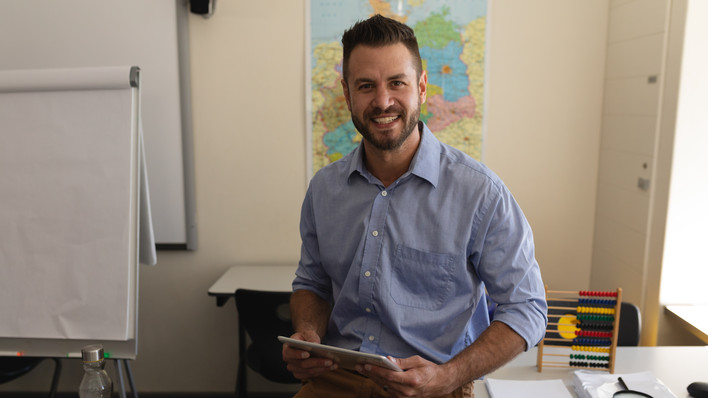New equipment purchased by School District 6 through last year’s technology levy is making a difference in the classroom.
Ruder fifth-grade teacher Sherri Nissen said the computers and other teaching aides are making a big difference.
Classrooms across the district saw upgrades over the summer after voters approved a $16 million elementary technology levy. The levy raises about $500,000 annually for technology upgrades in the classroom and schools.
Before the levy, teachers used old touch-screen whiteboards that often didn’t work, run by computers that were 10 years old.
Today the new system, with new computers and new “smart boards” that teachers and students alike can write on with just a finger, are making life far easier.
“It takes five minutes to put a lesson together,” Nissen said during a visit to her Ruder Elementary classroom last week.
Math students are using an online curriculum provided by Zearn. The problems are all done through the internet — the days of students lugging around math textbooks are over. Students do problems in two different ways — sometimes on worksheets by hand, other times on their Chromebooks — which are pared-down laptops that operate on the Google operating system.
If they have a question and they’re not in the classroom, another great resource is YouTube videos done by Duane Habecker — a math teacher who teaches lessons based on the curriculum.
On the writing side, students are also doing many assignments on their Chromebooks. The latest project they did was to research a renewable energy topic and write a paper on it — but they didn’t just write a paper, they created a story, with illustrations and graphics just like a magazine article, incorporating desktop publishing skills.
Nissen can also monitor a student’s progress and offer suggestions.
“I have access to their papers as they’re writing them,” she said.
If a student isn’t getting his work done, she can nudge him along because she can see, in real time, how far he’s gotten.
The students are also working in robotics — they have Lego robots that they program with iPads.
With technology also come some perils. For example, if students are researching space, they could easily come across a conspiracy theory that the Earth is flat — a popular topic on YouTube.
It’s been a teaching point to sort out the facts and science from the fiction, Nissen noted.
But it’s not all computer screens. The walls in Nissen’s class are still covered in books, and when it comes to reading stories, the good, old-fashioned printed book is still the way to go, she said. As are worksheets and other written materials.
“We still do paper and pencil,” Nissen said. “I don’t want that to go away.”
![]()



